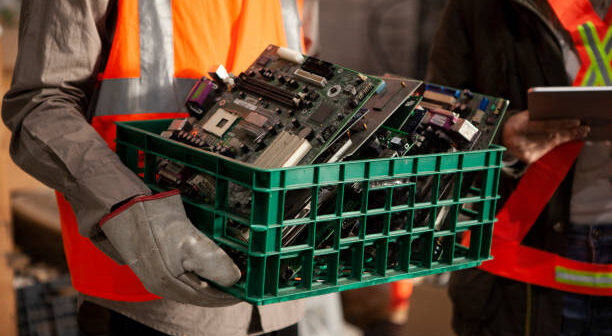The landscape of electrical and electronic waste (e-waste) is a mounting concern globally, with rapid technological advancements leading to increased turnover of electronic devices.
The European Union’s response to this burgeoning issue is the Waste Electrical and Electronic Equipment WEEE Directive, an innovative and critical legislation aimed at tackling the problem head-on. This article delves into the various challenges and opportunities that the directive presents within the e-waste recycling sector in the EU.
Understanding the WEEE Directive
The WEEE Directive was first introduced in 2002 and revised in 2012 to accommodate the rising tide of e-waste. Its primary objectives are to prevent e-waste, encourage its reuse, recycling and other forms of recovery, and reduce the disposal of waste. It also aims to improve the environmental performance of all operators involved in the life cycle of electronic equipment, particularly those dealing with the treatment of e-waste.
The Recycling Challenge
One of the significant challenges posed by the WEEE Directive is the complexity of recycling e-waste. Electronic devices are composed of a myriad of materials, some of which are hazardous. The separation and treatment of these materials require sophisticated technology and processes that can be both cost-intensive and technically demanding.
Collection and Logistics
The logistics of collecting and transporting e-waste to recycling centers is another challenge. Ensuring that the collection system is convenient and efficient is crucial to encourage consumer participation. Additionally, the transportation of collected e-waste must adhere to environmental and safety standards, adding layers of complexity to the recycling process.
Data Erasure and Privacy Concerns
As electronic devices often contain sensitive data, ensuring complete data destruction before recycling is imperative. This presents a significant challenge as consumers and companies are becoming increasingly concerned about data privacy.
Technological Advancements and Innovation
However, the WEEE Directive also opens up opportunities, particularly in the area of technological innovation. The necessity to handle complex e-waste efficiently has spurred advancements in recycling technologies. These innovations not only enhance the capability to recycle materials but also improve the efficiency and cost-effectiveness of the process.
Eco-Design and Product Lifecycle
The WEEE Directive encourages manufacturers to design products with their end-of-life disposal in mind. This eco-design approach has the potential to make products more easily recyclable and has spurred innovation in product design, promoting sustainability across the product lifecycle.
Job Creation and Economic Incentives
Recycling e-waste is not just an environmental necessity but also an economic opportunity. The process of recycling and the production of recycled materials can create jobs, stimulate the economy, and offer a source of valuable raw materials that would otherwise be wasted.
Development of a Circular Economy
The directive aligns with the broader EU goal of establishing a circular economy, where the value of products, materials, and resources is maintained in the economy for as long as possible. By promoting the collection, recycling, and recovery of e-waste, the WEEE Directive plays a pivotal role in this systemic shift.
Looking Ahead
The WEEE Directive, while presenting significant challenges, is pivotal in the EU’s efforts to manage e-waste. The challenges of recycling complex materials, ensuring efficient collection systems, and dealing with data security are countered by opportunities for innovation, economic growth, and the development of a circular economy. As technology and societal awareness evolve, the WEEE Directive’s role will be critical in shaping a sustainable approach to electrical and electronic equipment’s life cycle.




